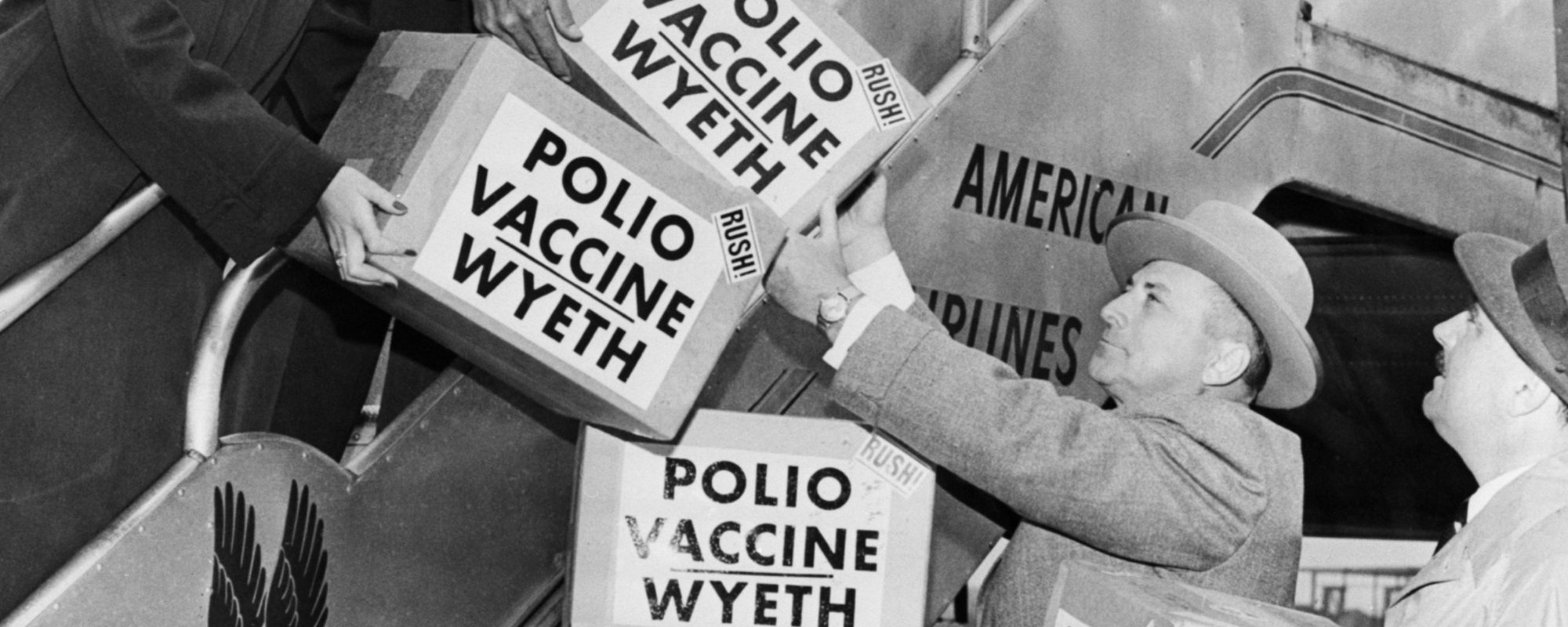Since 2020 we (obviously) not only suffered like crazy with Covid-19, but we also witnessed the making of likely the fastest vaccine in history to slow infectious disease. In the past, creating vaccinations took many, often up to ten years, to create. One of these said vaccines was needed for an extended period of time but was direly needed Poliovirus vaccine.
Videos by Rare
What Is Poliovirus?
Polio is a highly contagious virus. Once it makes contact with a host’s body, it replicates and reproduces itself in the intestines and bloodstream. From there, it can cause infection in the spinal cord and brain. Paralysis is caused when the virus attacks the nervous system.
The virus was caused by three poliovirus types of the enterovirus genus and is spread by either feces or phlegm or mucus. Polio is contracted orally and multiples through the district tract.
The first polio outbreak in the united states was in Rutland County, Vermont, in 1914. While only 18 people died, 132 permanent paralysis cases of polio occurred.
Polio Effects
The disease, as many viruses do affect people differently. Some infected people felt no symptoms. Others felt typical cold symptoms, including fever, sore throat, stomach pain, vomiting, headache, and stiff neck.
While many in the united states were affected by the disease. Poliovirus came to the forefront of people’s attention hen President Franklin Delano Roosevelt was paralyzed by polio and was in a wheelchair.
Polio Vaccines:
Polio vaccination did not come until 1955. Hilary Koporski created the first with a version people drank. While it wasn’t approved to be used in the united states, the Salk vaccine, created by Jonas Salk, created the IPV- or Inactivated polio vaccine was given as a shot. The Sabin vaccine, created by Albert Sabin, was an Oral Polio Vaccine taken as liquid drops. The latter, also known as OPV, was created by weakening the virus’s three serotypes by growing them in monkey kidney cells. This version of polio was weakened enough and, after swallowed, didn’t cause the disease. In addition, OPV encourages antibodies to grow in the human intestines as an immune response. However, their incidences that OPV’s live virus could revert and cause paralysis. This is why the united states use only the IPV, which has significantly less serious side effects. The shot contains dead versions of the inactivated poliovirus killed with the chemical formaldehyde. Therefore will not replicate inside the body.
From 61-66, children in the United States were given two doses of the polio vaccine. In 1997-1999, this changed slightly. Children received two shots and then revised two booster doses of the oral vaccine. After that, the final change was to give four shots.
With the help of the vaccine, wild Poliovirus was eradicated by the United States. However, other places like Afghanistan, Pakistan, and Nigeria have not managed to become polio-free. By 2013, only around 400 cases of polio were active were reported worldwide, according to the world health organization. Because of this, the rest of the world is still at risk, and Polio eradication initiatives have been formed and continue to work towards total global polio eradication.



